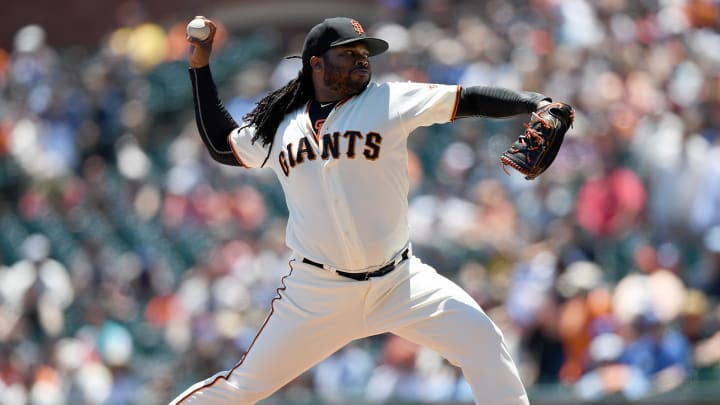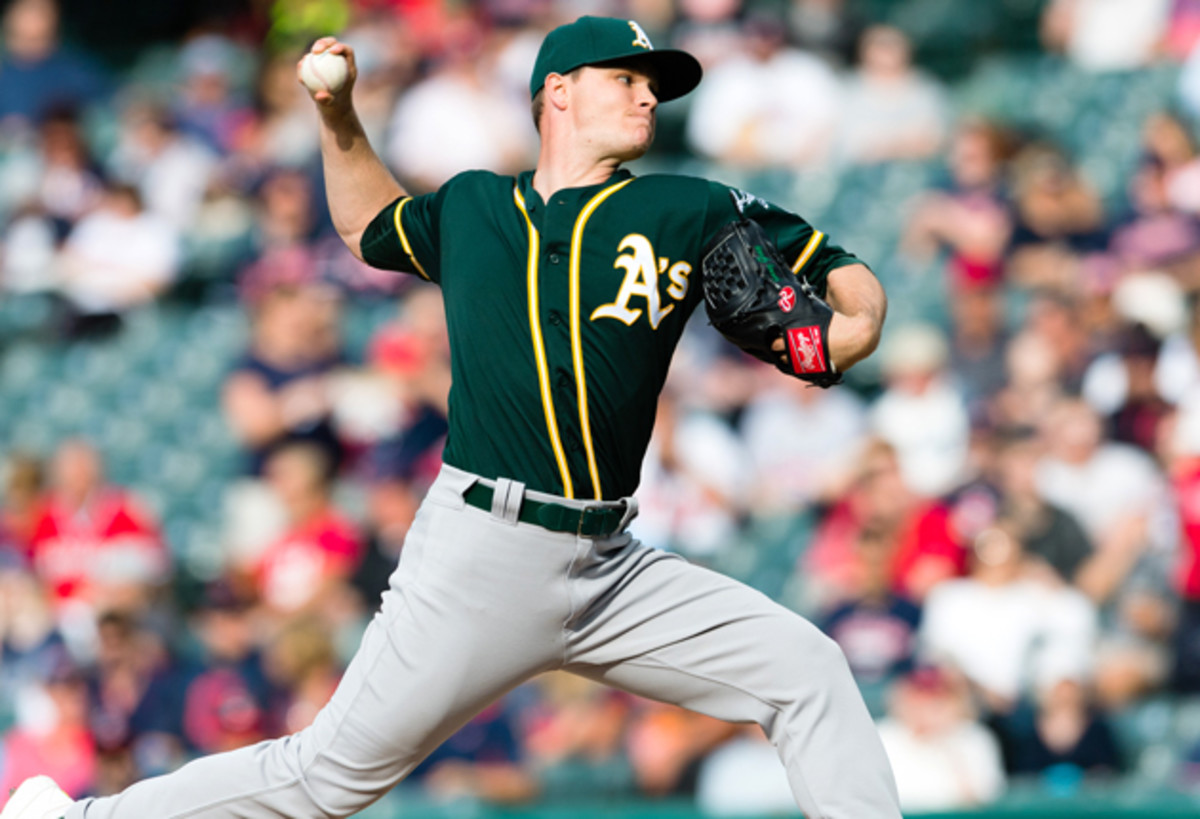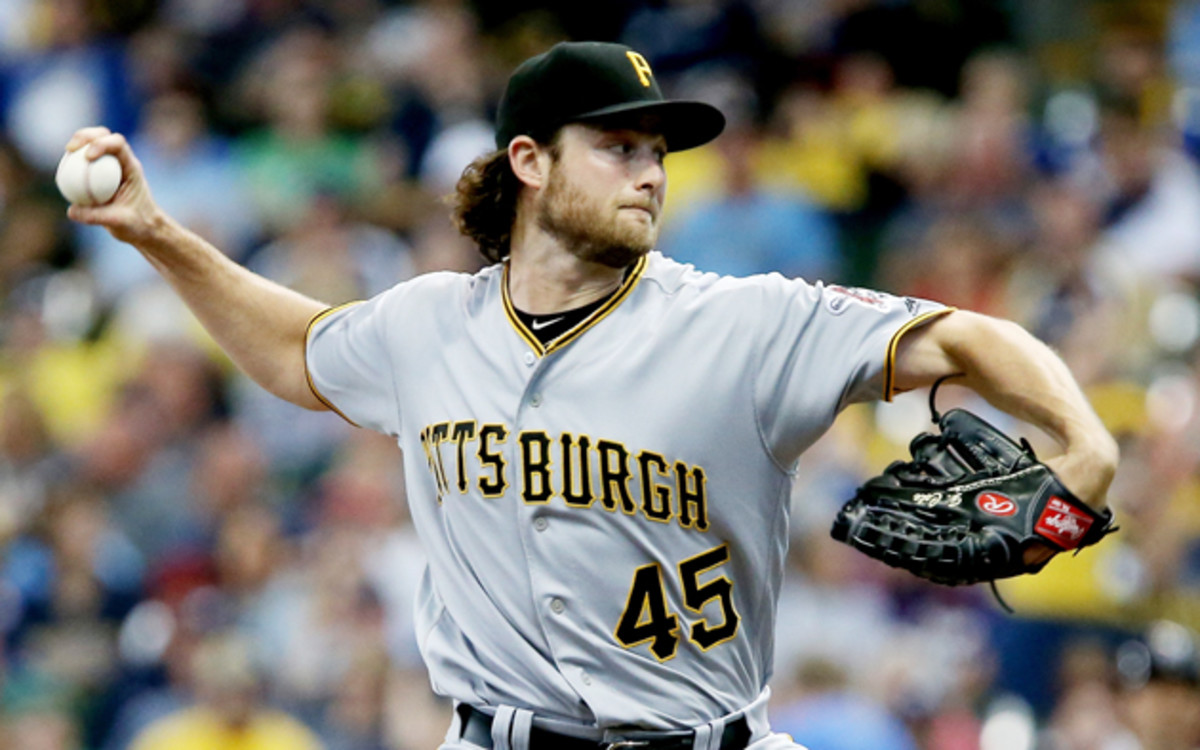Could Johnny Cueto, Sonny Gray be on the move once the trade deadline approaches?

There are just fewer than six weeks of unrestrained access to the trade market available to GMs across the league. The July 31 non-waiver trade deadline is not yet in view on the horizon, but that won’t stop contenders from getting active, looking for the players who could push them over the hump this season.
The starting pitcher market is beginning to come into focus. This will sharpen over the next few weeks as teams either remain in, or fall out of, the postseason chase and determine whether they are buyers or sellers. The contours of both leagues will help from those decisions, but a handful of teams are safely in one or the other camp.
Furthermore, contenders such as the Astros, Cubs and Yankees are known to covet an arm for the rotation, possibly a big one. The competition, in the form of packages driven by highly touted prospects, will be fierce for the best available pitchers. Complicating matters is the log-jammed postseason race in the AL, where every team but the White Sox and A’s are within three games of the second wild card, and the performance of many of the pitchers who would normally headline the trade market.
Below is a look at the starting pitchers who could be on the move by July 31, from most likely to least likely.
Jeff Samardzija, Giants
If there’s one team already guaranteed to sell, it’s the Giants. The team’s decade-long World Series window appears to be shutting, and even if it weren’t, they aren’t even within shouting distance of being within shouting distance of the postseason. With the Rockies, Dodgers and Diamondbacks making a run at history, it will be all but impossible for the Giants to even think about October this year. That, coupled with Samardzija’s first half, makes the righty the most likely pitcher to be traded this summer.
Assessing Astros' trade needs as baseball's best team faces high cost of title dreams
Forget about the 4.81 ERA. Samardzija owns a 1.18 WHIP and has fanned 104 batters, while walking just 13, in 91 2/3 innings this season. He’s a known commodity and a durable one, having thrown at least 203 1/3 innings in all of the last four seasons. There’s a lot of value in a pitcher like that, even if he doesn’t measure up to some of the other names on this list. Any team trading for Samardzija would be on the hook for another three seasons at $18 million per. That could complicate matters, but the bet here is that most prospective buyers won’t be scared off by the future price tag. Samardzija will be in his age-35 season in the final year of the deal, and while he might not be worth $18 million that season, the payoff on the front end could be worth it.
Jose Quintana, White Sox
If there’s a second team already guaranteed to sell, it would probably be the A’s, Padres or Phillies. However, none of those teams can offer a pitcher of Quintana’s caliber with as team-friendly a contract, and the White Sox are almost certain to be aggressive sellers, as well. Despite Quintana’s down season to this point, he has a great chance of being somewhere other than the South Side of Chicago by August 1.
First, the contract. Quintana, who is 28 years old, is owed $8.85 million next year. His team then holds options on him for 2019 and 2020, both at $10.5 million with $1 million buyouts. That’s peanuts for almost anyone by today’s MLB standards, let alone a left-handed starter in his physical prime with as good a history as Quintana. The White Sox asking price could reflect that, but, once on his new team, Quintana is eminently affordable.
The big holdup could be how he has pitched this year. Quintana was one of the most reliable pitchers over the last four years, throwing at least 200 innings every season while compiling a combined 3.35 ERA, 3.34 FIP and 1.22 WHIP. This season, however, he has pitched to a 5.07 ERA, 4.35 FIP and 1.37 WHIP in 81 2/3 innings. The affordability of his contract could actually help keep him in Chicago, should the White Sox not find a deal to their liking. They could just as easily trade him this offseason or before next year’s trade deadline, or, in another scenario, keep him at the top of a rotation that eventually includes Carlos Rodon, Lucas Giolito, Reynaldo Lopez and Michael Kopech. The odds remain strong, though, that a contender will meet the White Sox demands, especially with Quintana’s strong track record.

Sonny Gray, A’s
Gray is the most polarizing trade candidate among the group of likely available starting pitchers. On the one hand, he’s under team control for three more seasons, none of which is likely to tax a team’s finances too significantly. He has two great seasons to his name, during which he combined for a 2.91 ERA, 3.46 FIP and 1.14 WHIP with 352 strikeouts in 472 innings. Gray has put together some truly great seasons, including a top-three finish in the AL Cy Young race in 2015, and he’s in his age-27 season.
On the other hand, that version of Gray has been absent for two years. The present-day version has struggled mightily since the start of last season, compiling a 5.30 ERA, 4.25 FIP and 1.45 WHIP in 169 2/3 innings. He made just 22 starts last year, with neck and forearm issues, and was back on the shelf this year because of a shoulder strain. The last four years have been a mixed bag, to say the least.
Baseball's pressing question: What happens to a sport when nothing happens?
And yet, Gray’s mix of team control, affordability, potential, and proven ability will make him a popular trade target this summer. The A’s have the worst record in the AL, and given their finances, it’s hard to envision Gray as part of a competitive A’s team at any point over the next three seasons. At that point, the team would risk losing him and getting nothing in return. That could spur Billy Beane to action over the next six weeks.
Johnny Cueto, Giants
Like Samardzija, Cueto will send plenty of GMs to their phone to call Bobby Evans over the next few weeks. Despite a higher ceiling and better reputation, though, Cueto could be a harder sell than Samardzija.
First and foremost, Cueto is in the midst of the worst season of his career. He has a 4.42 ERA, 4.43 FIP and 1.30 WHIP in 93 2/3 innings. All of those would be his worst marks since 2008, his rookie season. Cueto’s velocity is down across the board, and he hasn’t shown any signs recently of breaking out of his malaise.
Additionally, Cueto is owed more money over a longer period of time than Samardzija. Cueto’s contract runs through 2021 at $21 million per season. Even if his team declines its $22 million option in 2022, it will have to pay him a $5 million buyout. That’s $89 million over four years for a pitcher whose best days are certainly behind him, and will be 35 years old in the final guaranteed season of the contract. Still, Cueto’s track record will make him an attractive, and expensive, piece on the market.
Justin Verlander, Tigers
In a way, the Tigers are the Giants of the AL. After competing for the AL pennant for a decade (including two trips to the World Series and a run of four straight AL Central championships from 2011 to 2014), their window appears to be closing. If GM Al Avila acknowledges that fact, could he do the seemingly unthinkable and trade away Verlander, one of the faces of the franchise? It’s not as crazy as it seems.
Understand, there are hurdles to trading the 34-year-old, starting with his contract. He’s set to make $28 million in both of the next two seasons, and his $20 million option in 2020 would vest if he finishes in the top five in Cy Young voting the previous season. As good as Verlander has been, there aren’t too many teams that want to commit to paying $56 million over two years to a 35-year-old pitcher. The Tigers would almost certainly have to eat some of the money to make a deal happen.
Second is his performance this year. After nearly winning the Cy Young last season,Verlander has regressed in 2017. He sports a 4.50 ERA, 4.49 FIP and 1.49 WHIP with an unsightly 42 walks in 82 innings. Verlander’s velocity is in line with career norms, which is encouraging for a pitcher in his mid-30s, but the numbers speak for themselves. Add them to his contract, and moving him becomes an even taller task.
Then, there’s the standings. The Tigers have the third-worst record in the AL, but with the bunched-up nature of the junior circuit—the Rays and Twins are tied in second wild card position just one game over .500—they could easily be in the postseason hunt a month from now. That would make trading Verlander a harder sell to the fanbase. File this one under “unlikely, but possible.”

Gerrit Cole, Pirates
We’ve reached the “their teams would have to be blown away” portion of the proceedings. Last season looked like the beginning of the end of an abbreviated run of competitiveness for the Pirates because it was. This team still has some nice pieces—Cole, Starling Marte, Gregory Polanco—and can be back in the hunt in the near future. But if a team blew them away with an offer for Cole, would Neal Huntington absolutely hang up the phone? That is hard to believe.
Special K: Red Sox closer Craig Kimbrel is compiling one of the greatest seasons ever
Still, Huntington would have to be presented with quite the package for Cole to be anything other than a Pirate on August 1. The righty is in the midst of the worst season of his career, but he’s two years removed from a top-four Cy Young season, he’s 26 years old, and he’s under team control for three more years. Teams don’t trade guys like that, least of all teams that need to be cost-conscious. It might be a down year in Pittsburgh, but Cole should remain a Pirate.
Chris Archer, Rays
OK, one more just for fun. If the Rays made Archer available, he’d immediately be the most sought-after player on the market. Not only is he 28 years old and bordering on being a legitimate ace, but he also has one of the most team-friendly contracts in the sport. The Rays bought out his arbitration years and then some three years ago. As such, Archer is set to make a total of $33.75 million from 2018 through 2021, assuming his team exercises team options of $9 million and $11 million in 2020 and 2021, respectively. Both of those look like slam dunks at this point.
The problem, though, for any team daydreaming about adding Archer to the top of its rotation is the competitiveness of the Rays. They’re in pole position for one of the AL wild card spots right now, and figure to be in the mix all season long. Their offense is among the best in the league, ranking first in homers, eighth in runs, seventh in slugging percentage and sixth in fWAR. Archer leads a strong rotation that includes Jake Odorizzi and Alex Cobb, possible trade targets in their own right, which is sixth in the majors in ERA, ninth in FIP and 10th in fWAR. Would Erik Neander, in his first trade deadline on the job as Rays GM, really move his team’s best pitcher while it sits in contention for its first trip to the postseason 2013. That does not seem realistic.
